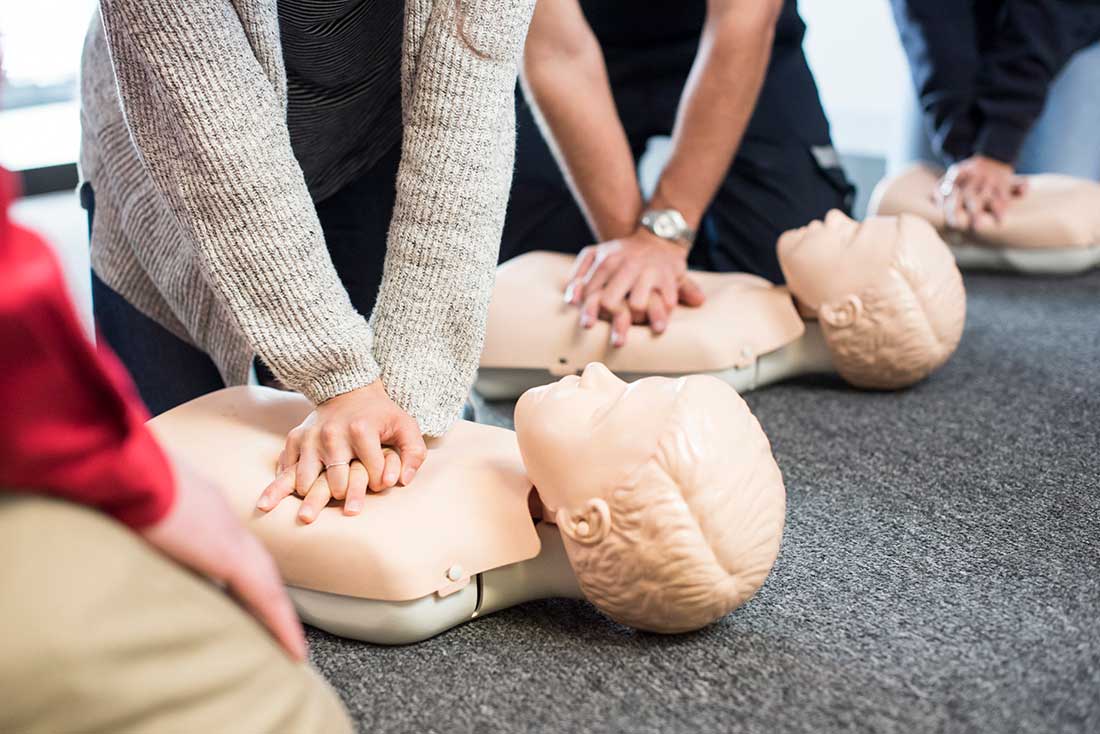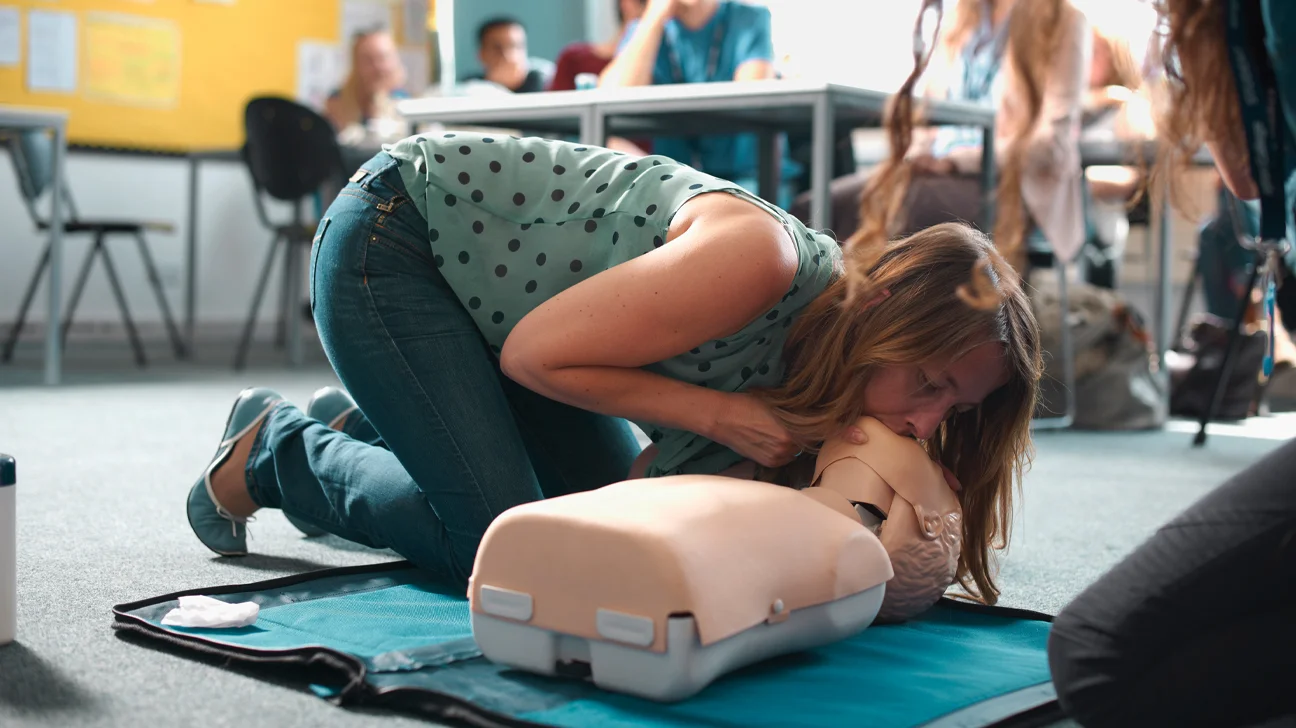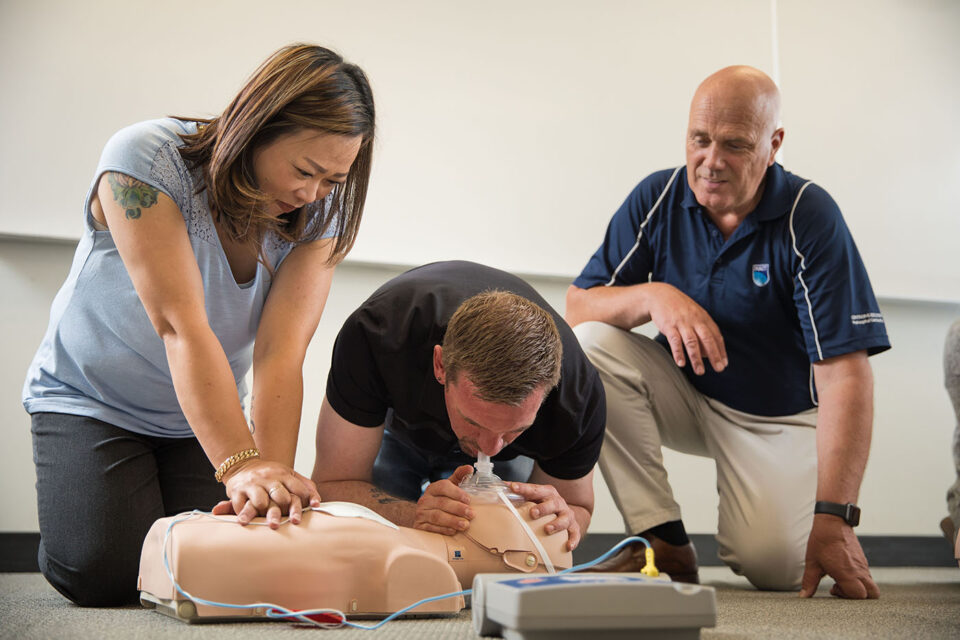Emergencies strike when least expected. In those moments, panic can overwhelm even the most prepared individuals. However, remaining calm is critical to taking effective action. Whether you’re dealing with a stranger or a loved one, your actions can save a life. Knowing how to perform CPR in an emergency situation is a skill that can make the difference between life and death.
Key Points
- Focus on your task and ignore distractions.
- Prioritize your safety before stepping in.
- Clear thinking leads to efficient action.
- Be confident in your abilities.
- Timing is crucial in an emergency.
CPR and First Aid ─ Knowing What to Do
Before facing an emergency, it’s important to equip yourself with life-saving skills. Enrolling in a CPR and First Aid class gives you the knowledge needed to act quickly and effectively. Practical skills from a course empower you to remain calm. Confidence comes from knowing exactly what to do.
Hands-on learning plays a crucial role here. By practicing, you’ll understand how to administer chest compressions and breathe for someone else. Attending a class ensures your technique meets current guidelines, so you can act without second-guessing.
With proper training, your movements become automatic. You’ll waste no time in determining how to begin chest compressions or when to stop. Classes prepare you to stay focused during high-pressure situations. Preparedness breeds calm, which is exactly what’s needed in life-threatening moments.

Assessing the Situation Before Acting
Step back for a second before rushing in. Quickly assess the situation. Is the person conscious? Are they breathing normally? If the person is unresponsive or not breathing, you must act immediately. However, check your surroundings first. Make sure the environment is safe before performing CPR.
Call for help before anything else. Dial your local emergency number and provide clear information. Tell them the condition of the individual and your location. If there’s someone nearby, instruct them to get help or grab an automated external defibrillator (AED).
After calling for help, focus solely on the person. Begin chest compressions immediately if they’re not breathing. Remember, every second counts. Trust the training you’ve received from a certified class to guide your actions.
How to Begin Chest Compressions
Place your hands in the center of the person’s chest. Push down hard and fast, aiming for about two inches deep with each compression. Keep your arms straight, and use your body weight to apply pressure. The rhythm should be consistent, pushing at a rate of about 100 to 120 compressions per minute.
Perform chest compressions until help arrives or the person shows signs of recovery. It’s exhausting work, but every push can mean the difference between life and death. If you get tired, ask someone else to take over, ensuring compressions continue without interruption.
Using Rescue Breaths
After performing chest compressions, provide rescue breaths. Tilt the person’s head back slightly to open their airway. Pinch their nose shut and breathe into their mouth, giving two breaths. Watch for their chest to rise with each breath. If it doesn’t, reposition the head and try again.
Rescue breaths should follow a ratio of 30 compressions to 2 breaths. Keep this pattern going until professional help arrives or an AED becomes available. Rescue breaths ensure oxygen flows to the brain, improving the chances of survival.

The Importance of Staying Calm
Staying calm is the cornerstone of effective emergency response. Panic clouds judgment, delays action, and decreases the chances of success. Focus only on the task at hand. Keep your mind clear of emotions and negative thoughts. Anxiety only drains your energy, which is needed to perform compressions and maintain focus.
Remind yourself of the training you received in your CPR class. You have the skills to help. Every compression and every breath matters. Trust yourself, and avoid getting overwhelmed by the gravity of the situation. Your calmness can also reassure the person in need.
The Role of AED in Emergencies
If an AED is available, use it immediately after starting compressions. Turn it on and follow the audio prompts. The AED will assess the person’s heart rhythm and advise whether a shock is needed. If a shock is required, ensure no one is touching the person and press the button.
Resume chest compressions immediately after the shock. The AED will prompt you to continue until help arrives. Using an AED significantly improves survival rates, especially when used within the first few minutes.
Practice and Training ─ Lifesaving Skills
Training through an official CPR class ensures that your skills remain sharp. Regular practice helps maintain confidence and precision in emergencies. Those who prepare are less likely to panic, knowing their actions can make a difference.

Conclusion
Emergencies require quick thinking and calmness. Knowing how to perform CPR, especially after taking a class, gives you the ability to help someone in distress. Keep your composure, focus on the steps, and act quickly. Your goal is to provide CPR quickly and effectively, and the key is maintaining clarity and composure. Every second counts.
In an emergency, you can be the difference.

